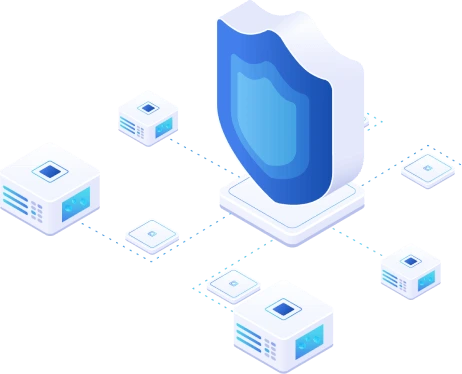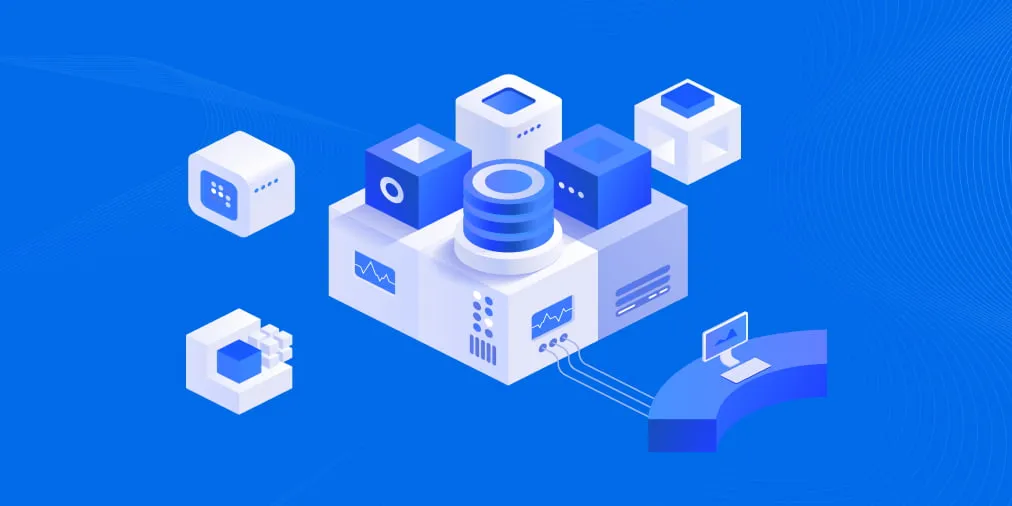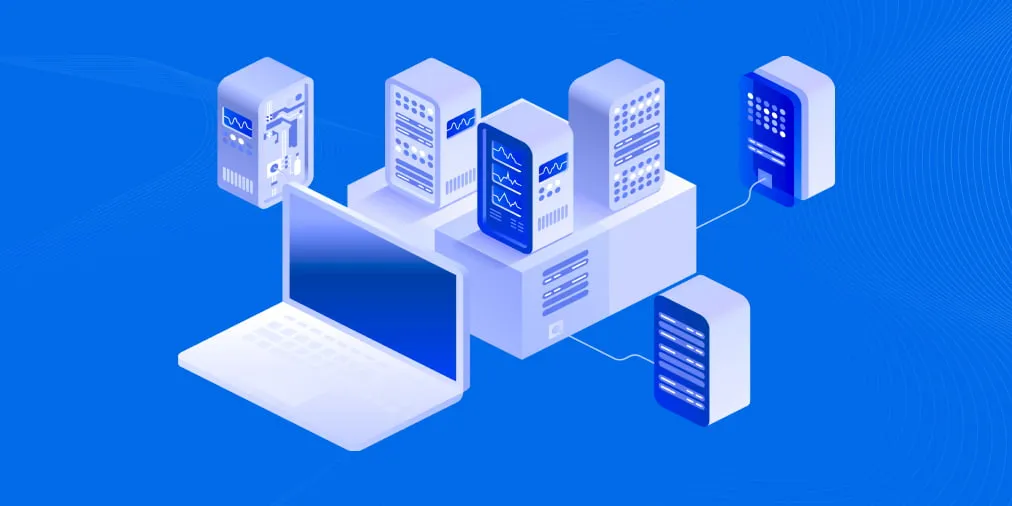Enterprise Data Storage and Management Trends
Basic storage devices, such as disk drives, and complex storage systems are evolving continuously as the volumes of data generated, processed, and stored grow exponentially. It is important to meet new requirements for storage capacity, speed, cost, and efficiency, among other factors, in different IT infrastructures.
Here we will explain the latest data storage technologies and trends in 2023and the best enterprise storage solutions to implement for your environment.
Hard Disk Drives
Hard disk drives (HDDs) are a traditional and widely-used storage medium, allowing you to store large amounts of data on a single device. Despite prices for the lighter and faster SSD devices going down, HDDs continue to evolve using new data storage technologies. HDDs have maintained relevance in their niche for various reasons, including the technology’s affordable price point versus other options.
HDD data storage trends
- Increased capacity. HDD manufacturers have been continuously increasing the storage capacities of drives and now offer high-capacity HDD models of 22 TB, 26 TB, and more.
- Helium-filled drives have gained attention in recent years. By filling the drive enclosure with helium instead of air, manufacturers can reduce internal air resistance. This allows the use of thinner platters and more platters in the same form factor. Helium drives can offer higher capacities, lower power consumption, and improved reliability.
- Shingled Magnetic Recording (SMR) is a technique used in some HDDs to increase areal density with overlapping tracks on the disk. While SMR drives can provide larger storage capacities, they may have slightly slower random write performance compared to conventional HDDs.
- Enterprise-grade HDDs are designed for data centers and enterprise data storage environments. These drives are built to offer higher reliability, longer lifespan, and better performance in high-demand scenarios. Enterprise HDDs often include features such as vibration sensors, rotational vibration compensation, and higher workload ratings.
- Advanced error correction improvements ensure data integrity. These techniques, such as multi-level error correction codes (ECC), help mitigate potential data corruption and improve the overall reliability of HDDs.
- Heat-assisted magnetic recording (HAMR) is an advanced new data storage technology that uses a laser to heat a small area of the disk surface during data writing, enabling higher storage densities and capacities in HDDs.Note: HAMR technology offers the potential for HDDs to keep up with the demand for larger storage capacities while maintaining cost efficiency. It is seen as a key advancement in HDD technology and is being actively researched and developed by major HDD manufacturers in the data storage industry. However, commercial availability and widespread adoption of HAMR-based HDDs is still limited, as several technical challenges need to be addressed to ensure reliability, durability, and cost-effectiveness.
- Energy efficiency. HDD manufacturers have been focusing on improving energy efficiency to reduce power consumption. Lower power requirements result in reduced operating costs and environmental impact. Energy-efficient HDDs are desirable for both enterprise data storage and consumer applications.
- Hybrid storage solutions combine the benefits of SSDs and HDDs. While SSDs provide faster access to frequently accessed data, HDDs are utilized for less frequently accessed data. This hybrid approach aims to strike a balance between performance and cost-effectiveness, using the strengths of both storage technologies.HDD vs SSD: While HDDs continue to play a role in data storage, solid-state drives (SSDs) have become more popular due to their faster performance and lower power consumption. SSDs are often preferred for primary storage, while HDDs are commonly used for secondary storage, backup/archival purposes, and large-scale data storage where cost per terabyte is a consideration.
Solid State Drives
Solid State Drives (SSDs) have gained significant popularity and continue to be a prevailing trend. They offer faster data access, improved reliability, and lower power consumption compared to traditional HDDs. SSDs are increasingly being used in laptops, desktops, servers, and data centers.
SSD trends in data storage industry
- Higher capacities. SSDs have been witnessing an increase in storage capacities. Manufacturers are continuously pushing the boundaries of NAND flash technology to offer SSDs with larger storage options.
- PCIe 4.0 and PCIe 5.0 interfaces have opened up new possibilities for SSD performance. These interfaces provide higher bandwidth and throughput, enabling faster data transfer speeds and reduced latency for SSDs. These SSDs are ideal for applications that require high-performance storage, including gaming, content creation, and data-intensive workloads.
- NVMe (Non-Volatile Memory Express) is an interface protocol designed specifically for SSDs, providing more efficient and streamlined communication between the storage device and the system. NVMe SSDs offer significantly faster data transfer speeds and lower latency compared to traditional SSDs with the SATA interface. NVMe has become the standard for high-performance SSDs, enabling faster boot times, reduced application load times, and improved overall system responsiveness.
- QLC (Quad-Level Cell) NAND flash is a type of solid-state storage technology that allows for higher storage densities at lower costs. QLC SSDs can store more bits of data per memory cell compared to previous generations, enabling larger-capacity SSDs at more affordable price points. However, QLC SSDs generally have lower performance and endurance compared to other NAND flash types.
- TLC (Triple-Level Cell) and MLC (Multi-Level Cell) SSDs continue to be widely used in consumer and enterprise storage. These SSDs offer a good balance between performance, capacity, and cost. MLC SSDs provide higher endurance and performance compared to TLC but at a higher cost. TLC SSDs, on the other hand, offer higher capacities and cost efficiency but have slightly lower endurance.
- 3D NAND technology is a storage technology that stacks memory cells vertically, allowing for higher storage densities and improved performance compared to planar NAND flash SSDs. Manufacturers continue to advance 3D NAND technology to increase storage capacities and improve overall SSD performance.
- SATA SSDs remain relevant for mainstream consumer and business use cases despite the growing popularity of PCIe-based SSDs. SATA SSDs provide good performance for everyday computing tasks and offer compatibility with existing systems that have SATA interfaces. SATA SSDs are commonly used in laptops, desktops, and entry-level servers.
- SSDs for data centers are designed to handle the rigorous demands of enterprise workloads, offering higher endurance, power loss protection, improved data integrity, and advanced error correction algorithms. Datacenter SSDs focus on delivering consistent performance, high reliability, and enhanced endurance to meet the needs of server virtualization, databases, and data-intensive applications.
- Enterprise NVMe-oF technology is increasingly popular as an enterprise storage system. NVMe-oF allows for remote access to NVMe SSDs over a network, enabling high-performance shared storage for clustered environments. NVMe-oF brings the benefits of NVMe SSDs, such as low latency and high throughput, to enterprise data storage systems, delivering faster data access and improved storage efficiency.
- TLC/QLC SSD caching involves using a smaller, high-performance SSD (such as an MLC or TLC SSD) as a cache for frequently accessed data. This caching technique, often implemented in conjunction with traditional hard drives, improves overall system performance by accelerating data access to frequently used files and applications.
- All-Flash Arrays have gained significant traction in the enterprise storage market. AFAs use solid-state drives (SSDs) to deliver high-performance storage solutions with low latency and high throughput. They are ideal for workloads that require fast data access, such as databases, virtualization, and analytics.
Tape
Although tape storage is considered a more legacy form of storage, it continues to evolve. Advancements in tape technology have resulted in higher storage capacities, improved data transfer rates, and enhanced reliability. Tape storage remains relevant for long-term archival purposes due to its cost efficiency and durability. It is also popular for its advantages for backup storage and remains one of the data protection trends in 2023 in terms of data backup to tape.
Data Deduplication and Compression
Data deduplication and compression techniques are being increasingly used to optimize storage efficiency. By identifying and eliminating redundant data or compressing it, organizations can reduce storage costs and improve overall performance. Data deduplication and compression are essential for backup storage systems. Deduplication appliances remain popular for enterprise organizations.
Cloud Storage
Cloud storage has become mainstream, allowing users to store and access data over the internet. Cloud storage services offer scalability, flexibility, high availability, and easy remote access. The cloud has gained popularity and is one of the data warehouse trends as a reliable and convenient way to store and share data.
Storage as a service
Storage as a Service (STaaS) has gained traction, allowing organizations to outsource their storage needs to third-party providers. It offers the flexibility to scale storage resources up or down as required and can be a cost-effective option for businesses with fluctuating storage requirements.
Object Storage
Object storage has gained popularity in the enterprise storage landscape, particularly for unstructured data and large-scale storage requirements. The object storage technology provides scalability, durability, and efficient management of massive amounts of data. It offers scalable and durable storage, making it suitable for use cases such as backups, archives, cloud-based applications, and multimedia content repositories.
Object storage is now faster and can meet requirements even for high-performance databases and other software running in the cloud. The object lock mechanism can protect objects from unwanted changes and make storage immutable. The most popular examples of object storage in the public cloud are:
- Amazon S3 in AWS
- Microsoft Azure Blob Storage
- Object Storage in Google Cloud Platform
Datacenter Storage Approaches
There are new complex approaches for data storage for companies that are in trend:
- Software-defined storage separates the storage hardware from the software layer. It enables organizations to manage and allocate storage resources dynamically through software-defined policies. Software-defined storage offers flexibility, scalability, and simplified management, making it an attractive option for enterprise storage.
- Hyper-converged infrastructures (HCI) combine storage, compute, and networking into a single integrated system. They simplify data center operations, improve scalability, and reduce hardware complexity. HCI solutions, like VMware vSAN, are becoming increasingly popular for enterprise storage, especially for virtualized environments.
- Hybrid cloud storage involves a combination of on-premises storage infrastructure and cloud storage services. It offers the flexibility to use the benefits of both private and public clouds while addressing data security, compliance, and performance requirements. Hybrid cloud storage allows organizations to optimize storage costs, scale resources as needed, and facilitate data mobility.
Network Attached Storage
Network attached storage (NAS) is widely used by individual customers and for enterprise storage architectures. The latest trends for NAS are:
- Increased storage capacities, allowing for larger amounts of data to be stored. NAS solutions now offer higher-capacity hard drives and support for multiple drive bays, enabling organizations to scale their storage infrastructure as their data requirements grow.
- Integration with cloud services. This integration allows for seamless backup, synchronization, and sharing of data between local NAS and cloud storage. This provides organizations with flexibility, data redundancy, and remote access to their data.
- Hybrid cloud NAS solutions combine on-premises NAS with cloud-based storage resources. They offer the advantages of both local and cloud storage, allowing organizations to store frequently accessed data locally while using the scalability and cost efficiency of the cloud for backup, archival, or less frequently accessed data.
- Object storage support in NAS systems is ideal for managing large-scale unstructured data. The object storage technology provides high scalability, durability, and cost efficiency to efficiently handle growing volumes of files, documents, images, and videos.
- Data protection and disaster recovery features are an increased focus area in NAS development. NAS vendors are offering features such as RAID (Redundant Array of Independent Disks) for data redundancy, snapshot capabilities for point-in-time recovery, and integration with backup software for robust data protection strategies.
- NAS for video surveillance. NAS systems are being specifically designed and optimized for video surveillance applications. These NAS solutions provide high throughput, support for multiple IP cameras, and features like video analytics, intelligent video management, and video content search capabilities.
- Scalable and distributed NAS solutions are gaining popularity, particularly for large enterprises and organizations with geographically dispersed locations. These solutions allow for the consolidation of data across multiple NAS devices, providing centralized management and simplified data access.
- Integration with virtualization platforms such as VMware and Hyper-V. This integration enables efficient provisioning and management of virtual machines (VMs) and provides features like VM-level snapshots and replication for enhanced data protection in virtualized environments.
- Enhanced security features to protect data from unauthorized access and cyber threats. These features include built-in encryption, access controls, integration with Active Directory or LDAP for user authentication, and support for secure file transfer protocols.
- Internet of Things (IoT) integration. NAS devices are evolving to support IoT deployments and edge computing. They can act as storage and processing hubs for IoT devices, enabling data collection, analysis, and storage at the edge of the network.
Storage Area Network
Storage scalability and the ability to increase storage size in a data center are some of the features of a storage area network (SAN). SAN systems remain leaders in terms of high performance and scalability for enterprise data centers.
SAN enterprise data storage trends
- Fibre Channel (FC) advancements. Fibre Channel, a high-speed networking technology commonly used in SANs, has witnessed advancements in terms of speed and capabilities. Higher-speed FC standards, such as 64 Gb/s and 128 Gb/s, have been introduced, providing increased bandwidth for storage networks.
- NVMe over Fabrics (NVMe-oF) is an emerging trend in SANs, enabling the use of NVMe storage devices over a network. NVMe-oF uses the high-performance and low-latency characteristics of NVMe SSDs, allowing for faster data access and storage connectivity in SAN environments.
- Convergence with Ethernet. SANs traditionally relied on Fibre Channel for storage networking. However, there is a trend toward the convergence of storage and Ethernet networks. Technologies like Fibre Channel over Ethernet (FCoE) and iSCSI (Internet Small Computer System Interface) facilitate the integration of SANs with Ethernet infrastructures, simplifying network architectures and reducing costs.
- Software-defined storage is gaining traction in SAN deployments. The technology separates the storage software from the underlying hardware, providing greater flexibility and agility in SAN management. It allows organizations to centrally manage and automate storage provisioning, data placement, and performance optimization in SAN environments.
- Multi-cloud SAN connectivity. As enterprises adopt multi-cloud strategies, there is a need for SAN connectivity across different cloud providers and on-premises infrastructure. SAN technologies are evolving to provide seamless integration and data mobility between SANs and various cloud environments.
- Artificial Intelligence (AI) and Machine Learning (ML) are increasingly integrated into SAN management tools to optimize storage performance, automate data tiering, predict capacity requirements, and identify performance bottlenecks. AI-driven SAN analytics provide actionable insights and enable proactive management and troubleshooting of these AI storage solutions.
- Increased focus on security. With the growing concerns around data breaches and cybersecurity threats, SANs are placing increased emphasis on security features. Encryption of data in transit and at rest, access controls, authentication mechanisms, and data integrity checks are becoming essential components of SAN deployments.
- Hyper-converged infrastructure (HCI) and SAN integration. HCI, which combines storage, computing, and networking in a single integrated system, is evolving to support SAN connectivity. HCI solutions are incorporating SAN protocols and technologies to provide high-performance storage capabilities along with compute resources.
- Automation and orchestration technologies are used in SAN management to streamline provisioning, configuration, and monitoring processes. These technologies help reduce manual tasks, improve efficiency, and enable more agile and responsive SAN operations for enterprise data storage.
Data Protection and Security
With the rising concerns around data breaches and cyber threats, data protection and security have become crucial considerations for enterprise data storage. Storage solutions with built-in encryption, access controls, and backup/DR solution integration are in demand to ensure data integrity and availability.
- Ransomware resiliency refers to the measures implemented to protect data from ransomware attacks. It involves proactive measures such as robust backup and recovery processes, data encryption, access controls, employee training, and the use of advanced threat detection and prevention mechanisms.
- Immutable storage refers to a storage architecture where data once written cannot be modified, altered, or deleted for a specified period. Immutable storage helps protect against data tampering and malicious modifications, making it useful for compliance, legal hold, and data integrity purposes.
- Continuous data protection (CDP) is a data protection method that provides real-time or near-real-time backup and replication capabilities. CDP captures every change made to data and allows for recovery back to any point in time and minimizes data loss in the event of failure or data corruption.
- Air-gapped storage. An air gap refers to a physical or logical separation between systems or networks to prevent unauthorized access or data transfer. In the context of data protection, an air gap can be used to isolate critical data from potential threats, such as malware or network intrusions. It typically involves storing data on separate offline storage systems in a secured location to provide an added layer of protection.
- Data masking is a technique used to protect sensitive data by replacing real data with fictional or scrambled data. It ensures that the data remains functional for development, testing, or analysis purposes while safeguarding the privacy and security of sensitive information.
- Data erasure, also known as data wiping or data sanitization, involves securely removing data from storage devices to prevent unauthorized access or data recovery. Proper data erasure techniques ensure that data cannot be recovered using forensic methods, reducing the risk of data breaches during storage decommissioning or device disposal.
- Backup modernization refers to the adoption of advanced backup technologies and practices to improve data protection and recovery processes. This includes using features such as incremental forever backups, global deduplication, snapshot-based backups, instant recovery, and integration with cloud storage services.
- Data classification involves categorizing data based on its sensitivity, value, and regulatory requirements. By classifying data, organizations can implement appropriate data protection measures, such as access controls, encryption, and retention policies, based on the specific classification level of the data.
- Zero trust security is a security model that assumes no inherent trust within a network or storage environment. It requires continuous authentication, authorization, and encryption for all users, devices, and data, regardless of their location or network segment. Zero trust security helps protect against insider threats, unauthorized access, and lateral movement within the network.
- Dark data management. Dark data refers to unstructured, unmanaged, or unused data that resides within an organization’s storage systems. Dark data management involves identifying, classifying, and applying appropriate data protection measures to dark data, thereby reducing storage costs, minimizing security risks, and optimizing data utilization. This is a new trend for enterprise storage and data management.
Storage Price
Data storage trends in terms of price remain more or less the same as for the previous year:
- Declining cost per terabyte. The cost per terabyte of storage has been steadily decreasing over the years. Advancements in storage technologies, such as higher-capacity hard drives, more efficient NAND flash memory, and improved manufacturing processes, have contributed to these lower storage costs. This trend is expected to continue as storage technologies evolve further.
- Price-performance ratio. Manufacturers are focused on improving price-performance ratios. They are striving to deliver better performance at competitive price points, enabling organizations to store and retrieve data more efficiently and cost-effectively.
- Cloud storage pricing competition. The competition among cloud storage providers has driven down the cost of cloud storage services. Cloud storage providers continue to reduce prices and offer more flexible pricing models to attract customers. This trend has made cloud storage an increasingly affordable option for organizations of all sizes.
- Tiered storage pricing. Storage providers are offering tiered pricing models based on performance levels, access frequencies, and storage types. This allows customers to choose storage options that align with their specific needs and budget. Data that requires frequent access or high performance can be stored on more expensive tiers, while less frequently accessed or lower-performance data can be stored on more cost-efficient tiers.
- Subscription-based pricing models are gaining popularity in the cloud storage industry. Instead of large upfront investments, customers can pay a recurring subscription fee for storage services. This model helps organizations manage their storage costs more predictably and align expenses with usage.
- Commodity hardware and software-defined storage solutions have led to more cost-effective storage deployments. Software-defined storage enables organizations to use standard hardware components and open-source or commercial software to build scalable, flexible, and cost-efficient storage systems.
- Efficiency improvements aimed at reducing costs. These improvements include technologies such as data deduplication, compression, thin provisioning, and data tiering, which help optimize storage utilization, reduce storage footprints, and improve overall efficiency.
Note: You should always be ready for unexpected hikes in prices, such as the one following the flood in Thailand in 2011 (where disk drive plants and factories are located) and in 2021 after a surge in demand for Chia cryptocurrency, which requires huge amounts of storage.
NAKIVO Backup & Replication and Storage Trends
NAKIVO Backup & Replication is a data protection solution designed for today’s virtual, hybrid and multi-cloud environments. The solution can protect data stored on different storage media using the latest data storage technologies. The solution supports the backup of physical and virtual machines, file shares, Microsoft 365 data, etc.
The NAKIVO solution supports backup to different storage targets, including:
- Network Attached Storage
- Storage Area Network
- Tape
- Local storage with HDDs and SSDs
- Block storage in the cloud
- Object storage in the cloud, such as Amazon S3 and Azure Blob Storage
- Backup repositories with immutability
The NAKIVO solution also supports the following features to meet the storage industry trends:
- LAN-free data transfer
- Data deduplication and compression
- Integration with NAS devices to create a full backup appliance
- Integration with enterprise deduplication appliances
- Data encryption
- Backup from storage snapshots via integrations with enterprise data storage solutions
You can find the full list of data protection and disaster recovery features here.





